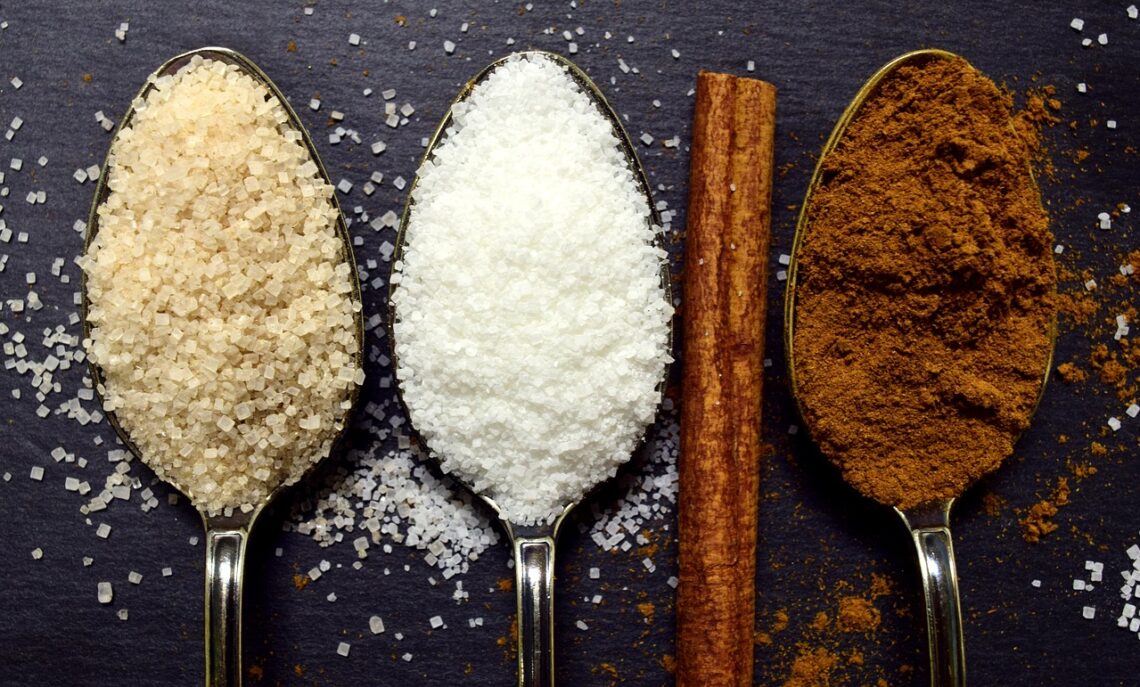
The Hidden Dangers of Added Sugars: What You Need To Know
Have you ever wondered about the impact of added sugars on your diet? While sugar may add flavor to your favorite foods and drinks, it can also wreak havoc on your health.
According to a study by the Indian Council of Medical Research (ICMR), an adult in urban India consumes approximately 19.5 teaspoons of sugar on a daily basis, exceeding the WHO recommendation of 6 teaspoons or less.
The same survey also found that the intake of sugar-sweetened beverages, such as soda and packaged juices, is high among Indian adults, contributing significantly to overall sugar consumption.
However, the average sugar consumption in India varies depending on the region, age, and lifestyle of the individual.
In this blog we will explore the health risks of consuming too much added sugar, how to identify them on food labels, hidden sources of added sugars, tips for reading food labels, and how to reduce your intake of added sugars. Let’s begin.
Understand Sugar Terminology on Food Labels
Understanding sugar terminology on food labels can be helpful in identifying different types of sugars used in products.
Here are some common terms related to sugar that you may encounter on food labels:
1. Sugar:
This term typically refers to white sugar, which is derived from sugar cane or sugar beets. It is a common sweetener used in many food products.
2. High Fructose Corn Syrup (HFCS):
HFCS is a sweetener made from corn syrup and is commonly used in processed foods and beverages. It is similar to table sugar but contains a higher proportion of fructose.
3. Glucose:
Glucose is a simple sugar that is a primary source of energy for the body. It can be derived from various sources, including fruits, cornstarch, and honey.
4. Fructose:
Fructose is another type of natural sugar found in fruits, honey, and some vegetables. It is also used as a sweetener in processed foods and beverages.
5. Lactose:
Lactose is the natural sugar present in milk and dairy products. It is a disaccharide composed of glucose and galactose.
6. Sucrose:
Sucrose is the scientific name for table sugar. It is a disaccharide composed of glucose and fructose and is commonly derived from sugar cane or sugar beets.
7. Maltose:
Maltose is a sugar formed by the breakdown of starch. It is composed of two glucose molecules and is found in malted grains and some sweeteners.
8. Galactose:
Galactose is a sugar that is less sweet than glucose or fructose. It is found in dairy products and some plant gums.
9. Corn Syrup:
Corn syrup is a sweetener derived from cornstarch. It is often used as a thickening or sweetening agent in processed foods.
10. Dextrose:
Dextrose is a type of sugar derived from corn or other starches. It is commonly used as a sweetener and may also serve as a food additive to enhance flavor or texture.
Hidden Sources of Added Sugars
Added sugars can be found in various unexpected food products. Here are some common hidden sources of added sugars to watch out for:
1. Sauces and Condiments:
Many sauces and condiments, such as ketchup, barbecue sauce, salad dressings, and marinades, can contain added sugars for flavor enhancement.
2. Yogurts:
Flavored yogurts often contain added sugars to enhance the taste. Even some seemingly healthy yogurts can have high sugar content, so it’s important to check the label and opt for plain or unsweetened varieties.
3. Breakfast Cereals:
Some breakfast cereals, especially those marketed to children, can be loaded with added sugars. Check the nutritional information and choose cereals with lower sugar content or opt for plain oatmeal or homemade granola.
4. Granola Bars and Energy Bars:
Many pre-packaged granola bars and energy bars are advertised as healthy options but can contain significant amounts of added sugars. Read the labels carefully and choose bars with minimal added sugars or consider making your own at home.
5. Flavored Drinks:
Sodas, fruit juices, sports drinks, flavored waters, and sweetened teas can contain high amounts of added sugar. These beverages can contribute a substantial portion of your daily sugar intake, so it’s best to choose water, unsweetened teas, or natural fruit-infused waters instead.
6. Packaged Snacks:
Snack foods like cookies, cakes, pastries, and flavored popcorn can contain hidden sugars. Check the ingredient list and nutritional information to make informed choices.
7. Ready-to-Eat Meals and Processed Foods:
Many pre-packaged meals, frozen dinners, canned soups, and processed meats can contain added sugars. Opt for fresh, whole food options or prepare homemade meals whenever possible.
8. Breads and baked goods:
Some bread and baked goods, including muffins, bagels, and pastries, may contain added sugars. Look for whole grain options with minimal added sugars, or consider making your own at home.
When shopping for food, it’s important to read ingredient labels carefully and be aware of the various names for added sugars, as discussed earlier.
Tips for Reading Food Labels
Identifying sugar on food labels can be a bit tricky since it can be listed under different names. Here are some tips to help you identify sugar on food labels:
1. Look for “Sugar” or “Added Sugar” in the ingredient List:
Look for the “Sugars” section on the nutritional information panel. This section provides the total amount of sugar in the product per serving. Keep in mind that this includes both naturally occurring and added sugars.
2. Review the ingredient List:
Look for ingredients that indicate the presence of sugar. Here are some common names for sugar and its derivatives that you might find in the ingredient list:
- Sugar (white sugar, brown sugar, cane sugar, beet sugar)
- High fructose corn syrup (HFCS)
- Corn syrup, corn syrup solids
- Dextrose, fructose, glucose, lactose, maltose, and sucrose
- Honey, molasses, maple syrup, agave nectar, and fruit juice concentrate
- Syrups (such as rice syrup, barley malt syrup)
3. Watch for Words Ending in “-ose”:
Many sugars have names ending in “-ose,” such as fructose, glucose, sucrose, and maltose. If you see these names on the ingredient list, it means the product contains sugar.
4. Analyze the Nutritional Information Panel:
Look at the “Total Carbohydrates” section of the nutritional information panel. It will specify the total grams of carbohydrates per serving.
However, this includes both natural sugars (e.g., lactose in milk) and added sugars. It doesn’t distinguish between the two, so you’ll need to refer to the ingredient list for a clearer picture.
5. Check for Sugar-Free or No Added Sugar Claims:
If a product claims to be “sugar-free” or “no added sugar,” it doesn’t necessarily mean it’s completely devoid of sugar. It might contain natural sugars or sugar substitutes. Look at the ingredients list to understand what sweeteners are used.
6. Be Aware of Hidden Sugars:
Some products may contain hidden sources of sugar, even if they don’t taste particularly sweet. These can include condiments, salad dressings, sauces, and processed foods. Checking the ingredient list is crucial to identifying these hidden sources.
Food labels in different countries or regions may have specific regulations and variations in how sugar is labeled. Hence, it’s good to familiarize yourself with the labeling laws and ingredient regulations in your area to make informed choices about the sugar content of the foods you consume.
Health Risks of Consuming Too Much Added Sugars
Consuming excessive amounts of added sugar can have several negative health effects. Here are some health risks associated with consuming too much-added sugar:
1. Weight Gain and Obesity:
Added sugars are high in calories but low in nutritional value. Consuming excessive amounts of sugar can contribute to weight gain and obesity. This is because sugary foods and beverages are often energy-dense but not very filling, leading to overconsumption of calories.
2. Increased Risk of Type 2 Diabetes:
A high intake of added sugars has been linked to an increased risk of developing type 2 diabetes. Excessive sugar consumption can lead to insulin resistance, where the body’s cells become less responsive to insulin, resulting in elevated blood sugar levels.
3. Increased Risk of Heart Disease:
Diets high in added sugars have been associated with an increased risk of heart disease. High sugar intake can lead to elevated triglyceride levels, increased blood pressure, inflammation, and weight gain, all of which are risk factors for cardiovascular problems.
4. Dental Health Issues:
Consuming sugary foods and beverages contributes to tooth decay and cavities. Bacteria in the mouth feed on sugar and produce acids that can erode tooth enamel, leading to dental problems.
5. Nutrient Deficiencies:
Foods high in added sugars are often low in essential nutrients. Consuming these foods can displace more nutritious options from your diet, potentially leading to deficiencies in vitamins, minerals, and other important nutrients.
6. Increased Risk of Chronic Diseases:
A high intake of added sugars has been associated with an increased risk of chronic conditions such as certain types of cancer, fatty liver disease, and metabolic syndrome.
7. Negative Impact on Mental Health:
Some studies suggest that high sugar intake may have negative effects on mental health, including an increased risk of depression and anxiety.
It’s important to note that naturally occurring sugars found in fruits, vegetables, and dairy products are generally not considered harmful when consumed as part of a balanced diet.
It is the excessive consumption of added sugars, commonly found in processed and packaged foods, that poses the greatest health risks.
How to Reduce Your Intake of Added Sugars
It’s no secret that added sugars can have negative effects on our health. That’s why it’s important to be mindful of your sugar intake and take steps to reduce it.
Here are some tips on how to reduce your intake of added sugars:
- One of the simplest ways to reduce your intake of added sugars is to choose whole foods, such as fruits, vegetables, whole grains, and lean proteins. These foods are naturally low in sugar and packed with nutrients that your body needs to function properly.
- Sugary beverages like soda, energy drinks, and sweetened teas and coffees can be a major source of added sugars in our diets. By switching to water or unsweetened beverages, you can significantly reduce your intake of added sugars.
- Use natural sweeteners in moderation. If you do need to sweeten foods or beverages, consider using natural sweeteners like honey, maple syrup, or stevia. While these sweeteners are still a form of added sugar, they are less processed than refined sugars and can provide additional nutrients and antioxidants.
- Plan ahead and prepare meals and snacks at home. When you cook at home, you have more control over the ingredients that go into your meals and snacks. By planning ahead and preparing meals and snacks at home, you can reduce your reliance on processed and packaged foods that often contain added sugars.
- Limit desserts and sweets. While it’s okay to indulge in desserts and sweets occasionally, try to limit your intake to special occasions. When you do indulge, be mindful of portion sizes and choose healthier options like fresh fruit or dark chocolate.
Conclusion
Making healthy choices and being mindful of our food choices are essential for our overall health and well-being. By reducing our intake of added sugars, we can improve our energy levels, manage our weight, and reduce the risk of chronic diseases like diabetes, heart disease, and certain types of cancer.
It is the small changes that make a big difference, so start by incorporating some of the tips discussed in this blog and gradually make more changes as you feel comfortable. With a little effort and commitment, you can improve your health and enjoy a happier, healthier life.


You May Also Like

Find Your Zen: Best Yoga Exercises for Stress Relief
23 June 2023
Weight Lifting for Seniors: Stay Strong and Active as You Age
26 May 2024